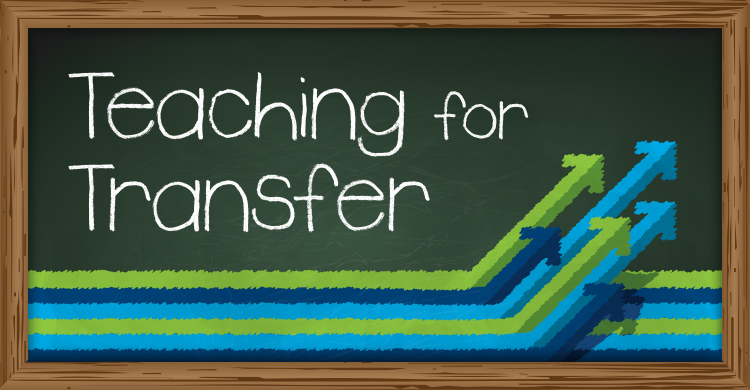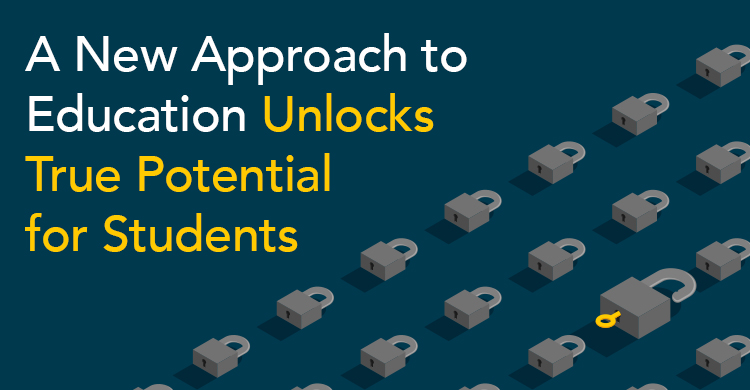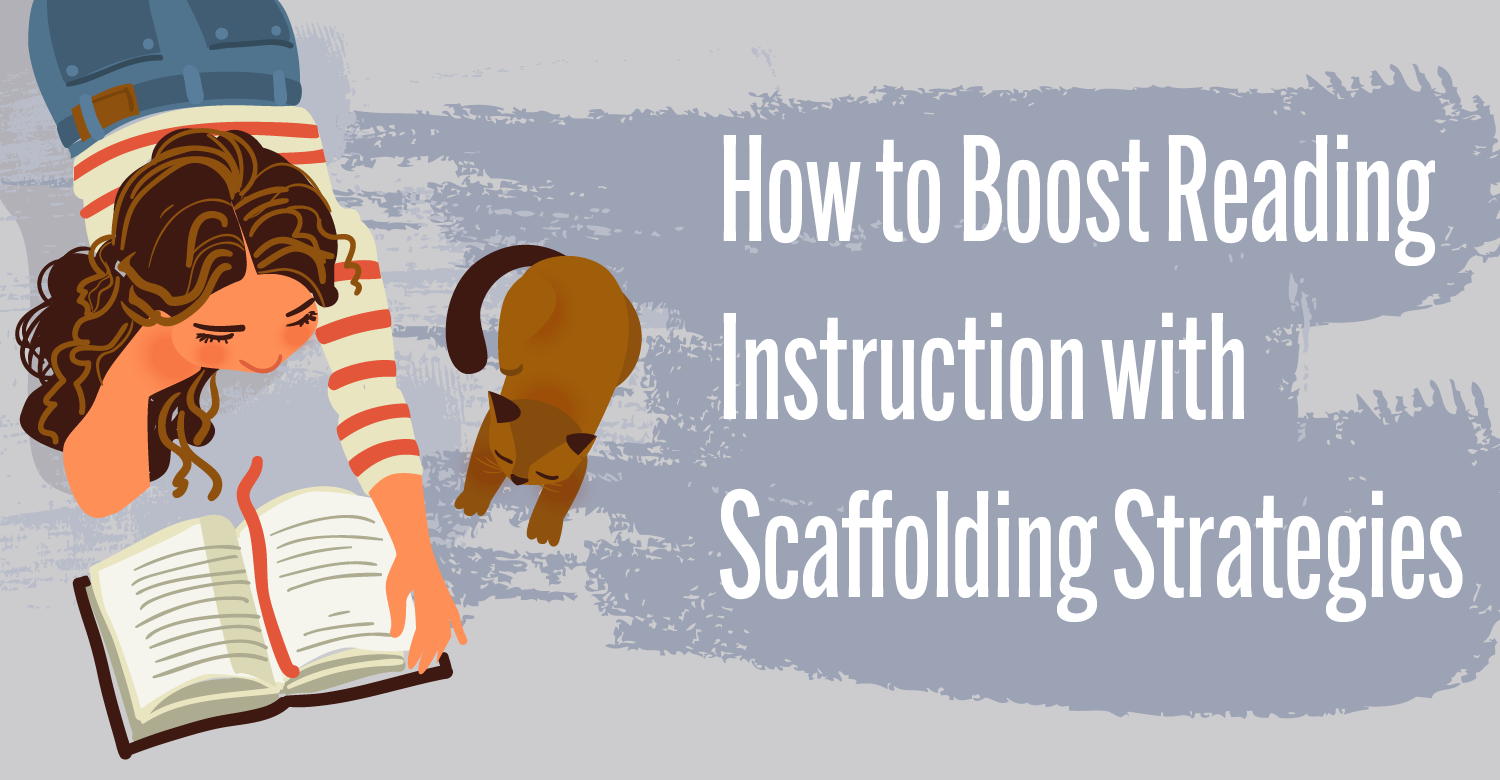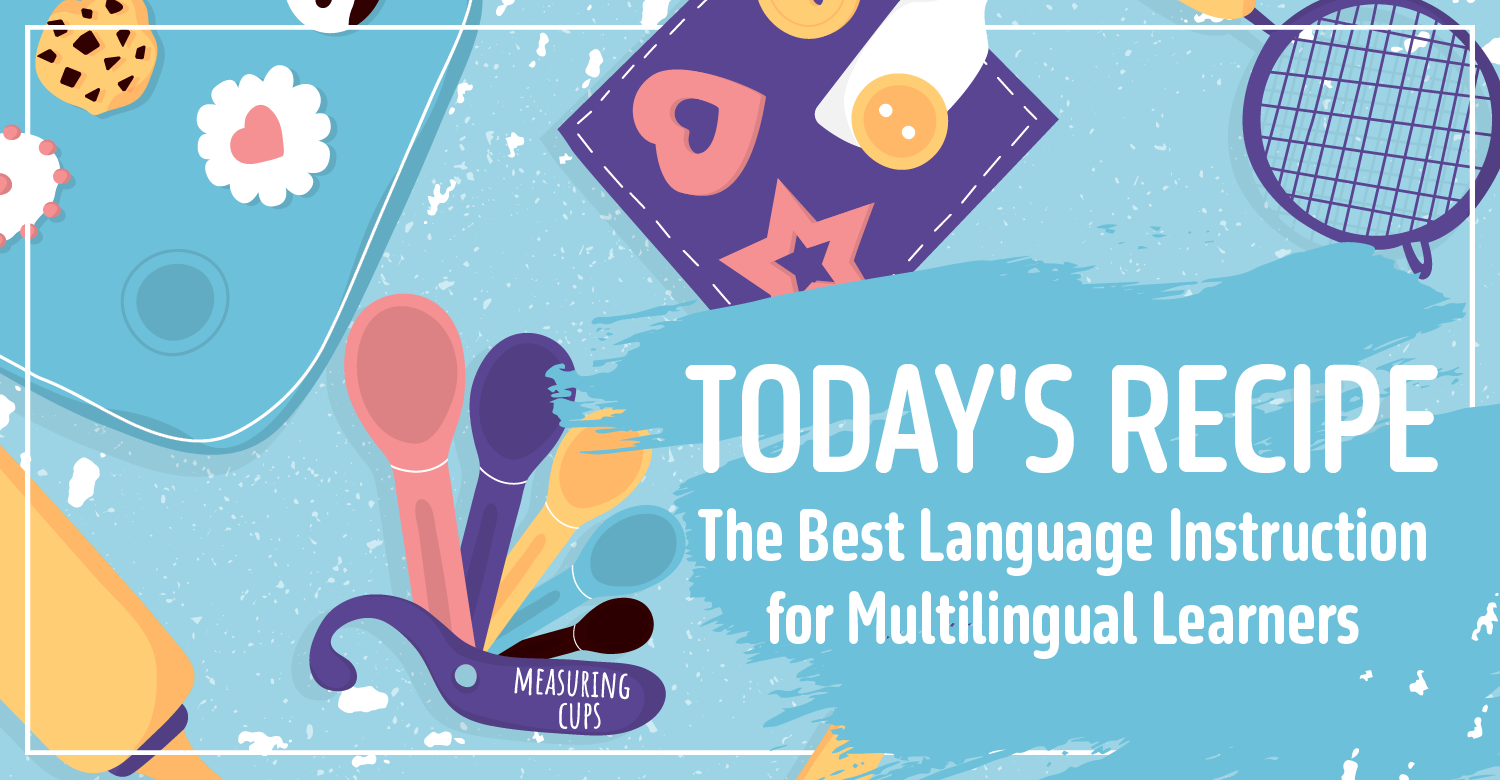Based on Teaching for Transfer
As NASA launched its space shuttles over the past 60 years, the multimillion-dollar boosters that transported those shuttles into the atmosphere were simply discarded after every space launch.
Lost in the ocean or superfluously tossed in a landfill, these giant pieces of metal have simply served as fossil evidence of our past. SpaceX, the private company that sent a shuttle into space this past June, developed a way to recapture and recycle the boosters. By doing this, they increased efficiencies in production costs, improved overall product development of the shuttle, and enhanced team collaboration and problem-solving.
This was an act of innovation. The team analyzed previous situations within the context of space travel, looked to other fields of study (such as means of cost reduction for airplane travel), and relied on the knowledge and skills in their domains of engineering, physics, and mathematics to create. Instead of thinking outside the box, they looked between boxes, taking the needed information from different fields and viewpoints, and then transferred that knowledge to solve the problem of reducing the cost of space flights.
How can we apply the lessons of SpaceX into the classroom? Moreover, how do we prepare students to engage in and succeed in similar experiences? Put differently, how do we teach students to transfer their learning in school to real-world problems?
Teaching Breadth and Depth
The knowledge and skills students need to successfully enter academia and engage in innovative work is twofold: First, they need a level of depth in discipline-based knowledge. They need hours of practice to develop enough knowledge to apply the learned material appropriately.
However, they also require a set of knowledge and skills to analyze multiple situations, handle the overwhelming experiences of complexity and unknowns, and engage with a diverse array of people. All in all, students need to see within a discipline and between and across disciplines and contexts.
The language we use for students to understand and discuss depth of learning is to break depth into two separate levels of learning: Level 1 is surface-level knowledge, and level 2 is deep-level knowledge. Surface-level knowledge is best defined as facts and procedures. For example, at the surface level, students can label greenhouse gases, define the core characteristics of greenhouse gases, and identify the formula for specific compounds (such as methane and carbon dioxide).
Deep learning is best defined as the ability to connect facts into a unifying relationship or enduring understanding. Here, students know how greenhouse gases relate to the warming of the Earth and the various natural and human-related causes for changes in greenhouse gas emissions. They can also evaluate the current and potential implications of the levels of such gases in the atmosphere.
The learning language used for breadth of knowledge and skills is transfer. Here, students analyze specific situations related to climate change, create proposals for preventing or reducing emissions, and scan other fields of study for solutions to problems that are akin to reducing global warming.
To engage fully in solving real-world problems, students need a balance of both breadth and depth. That is to say, students need an equal intensity and integration of surface, deep, and transfer knowledge to fully engage in learning and applying that learning to real-world problems.
Three Practices to Teach to Transfer
To begin the journey of ensuring students develop breadth and depth in their learning, consider the following three practices.
Start Students with Transfer-Level Opportunities
Provide students a problem or set of problems to analyze and inspect on day one of a new unit of study.
For example, let’s suppose you want students to study the foundations of the civil rights laws in the United States. Start your class off in small groups, and have each group read a set of articles and watch brief video footage pertaining to four different contexts that all connect to one theme. You may have one group reading articles pertaining to the recent Minnesota protests, another group reviewing articles related to the executive branch prohibiting LBGTQ adults from entering the military, another group studying a set of resources about immigration policies in the US (or other countries), and another group reviewing pandemic aid being directed to private schools from the US government.
Once each group has read those articles, mix the groups up and discuss common themes and relationships among each of the contexts. Next, ask students to develop a set of questions that emerge from their discussion. These questions may then serve as a means for driving the learning over the course of the unit of study. Let these questions drive the development of the depth of knowledge.
Create Change in Classroom Experiences for Students
As students begin to learn the knowledge and skills of the standards that are required of them to obtain, they will likely begin to hyper-focus on depth of knowledge. They will ignore the world around them and spend the hours needed to learn the core content.
Yes, they need to develop this knowledge, and they also need to step out of the books, quizzes, and tests, and take a gaze to other disciplines and other situations. To sprinkle transfer into your units of study, consider incorporating change into their learning experience.
For example, when students are reading an article or writing a paper, present them with the task of finding articles that illustrate other points of view, and/or have them write a counter-argument or counter-narrative to the perspective they are using in their current draft.
Another approach to supporting students in developing transfer-level learning is to present them with a new element within their current work that they largely ignored or had taken for granted previously. Imagine a group of students who have mastered their physics assignments but still have another 30 minutes of class. To nudge them toward increased learning, you decide to walk up and say that they can no longer ignore air resistance. Or, when a group of students in economics completely understands supply and demand, task them with handling the dynamic changes in the oil market due to the COVID-19 pandemic.
Another option is to change the context students are evaluating. Imagine that students are proposing a solution to reintroducing sea otters into the Pacific Ocean, and then you tell them that they have to create a solution for the exponential decline in the golden eagle population in the Altamont Pass due to the increase in wind turbines. Here, they face a change in breadth—but not depth—of knowledge.
Inevitably, we become stronger when we can handle new situations by taking what we know and then analyzing the new constraints, and adapting and molding our solutions. By having students face new challenges, they have to pop their head up out of their books and look around to survey new dynamics, viewpoints and contexts.
Inspect Your Instruction
Finally, look at your own instructional methods, and evaluate where along the continuum of rigor (breadth to depth) you have long valued and tended to in your teaching approach. The research conducted by Hattie and Donoghue (2016) illustrates that our teaching strategies all work in enhancing student learning, but they have a significant difference in their impact based on the level of learning we are focusing on with each student. Table 0.1 provides an example of strategies that are effective at each level of learning:
Table 0.1 High-Impact Strategies at Surface, Deep, and Transfer Levels of Learning
| Surface | Deep | Transfer | |
| Feedback | Teachers and students prompt students to elaborate on information. | Students and teachers prompt students to detect errors in solutions. | Students and teachers prompt students to evaluate similarities and differences between problems to determine success in one’s own solution. |
| Learning | Outline | Self-talk and self- question | Seek patterns in new situations |
| Instruction | Direct Instruction | Socratic Seminars | Problem- or Project- Based Learning |
McDowell, 2020
In other words, we need to think like Kenny Rogers and “know when to hold ‘em and know when to fold ‘em.” Take the time to determine when you will use certain strategies and when you change your approaches to ensure students develop surface, deep, and transfer-level learning.
Conclusion
By starting students with a transfer problem, incorporating change, and adapting our instructional approaches to students’ level of learning, we can make a significant and substantial difference for each and every student. When our students have breadth and depth, they can solve tomorrow’s problems.
They can build the next space shuttle, find the next vaccine, understand and address inequities, and ultimately build a better future for all. We need to teach them to transfer.
References
Hattie, J., & Donoghue, G. M. (2016). Learning strategies: A synthesis and conceptual model. Science of Learning, 1. https://doi.org/10.1038/npjscilearn.2016.13
McDowell, M. (2020). Teaching for transfer: A guide for designing learning with real world application. Bloomington, IN: Solution Tree Press.







